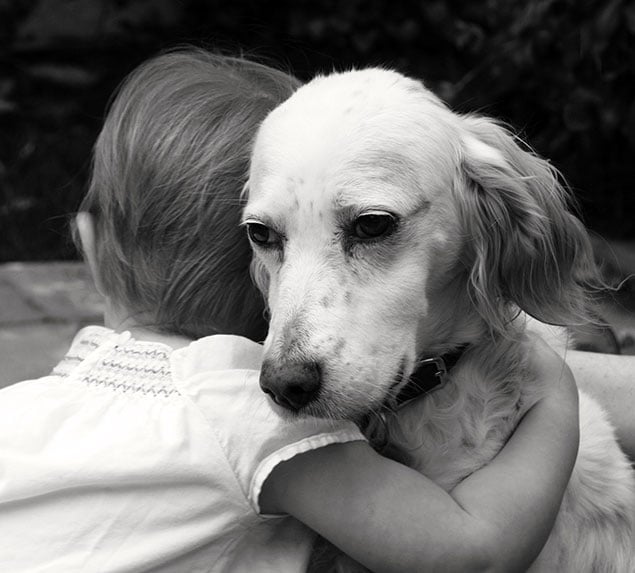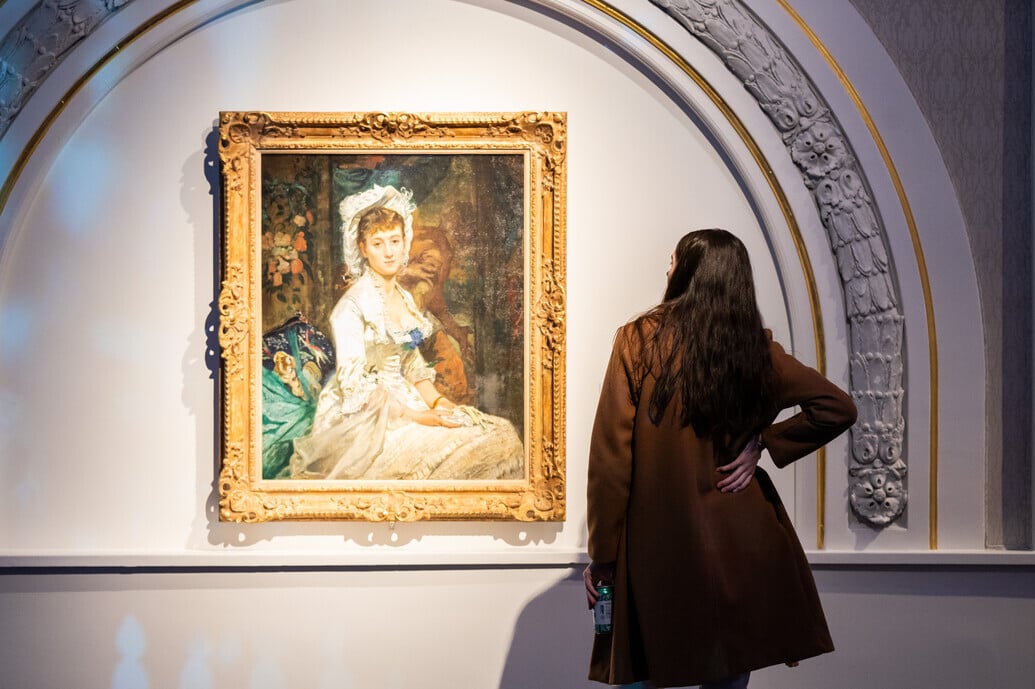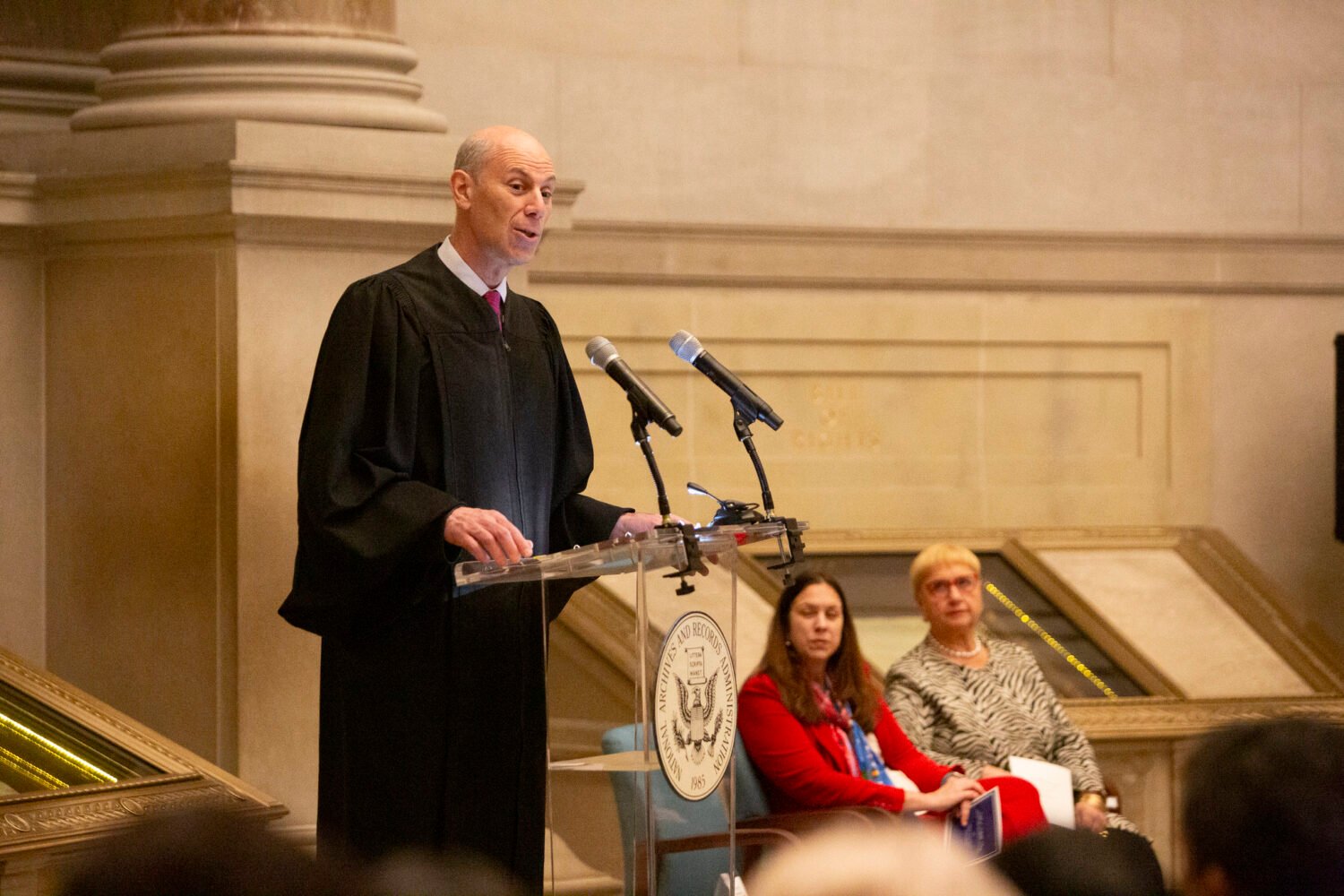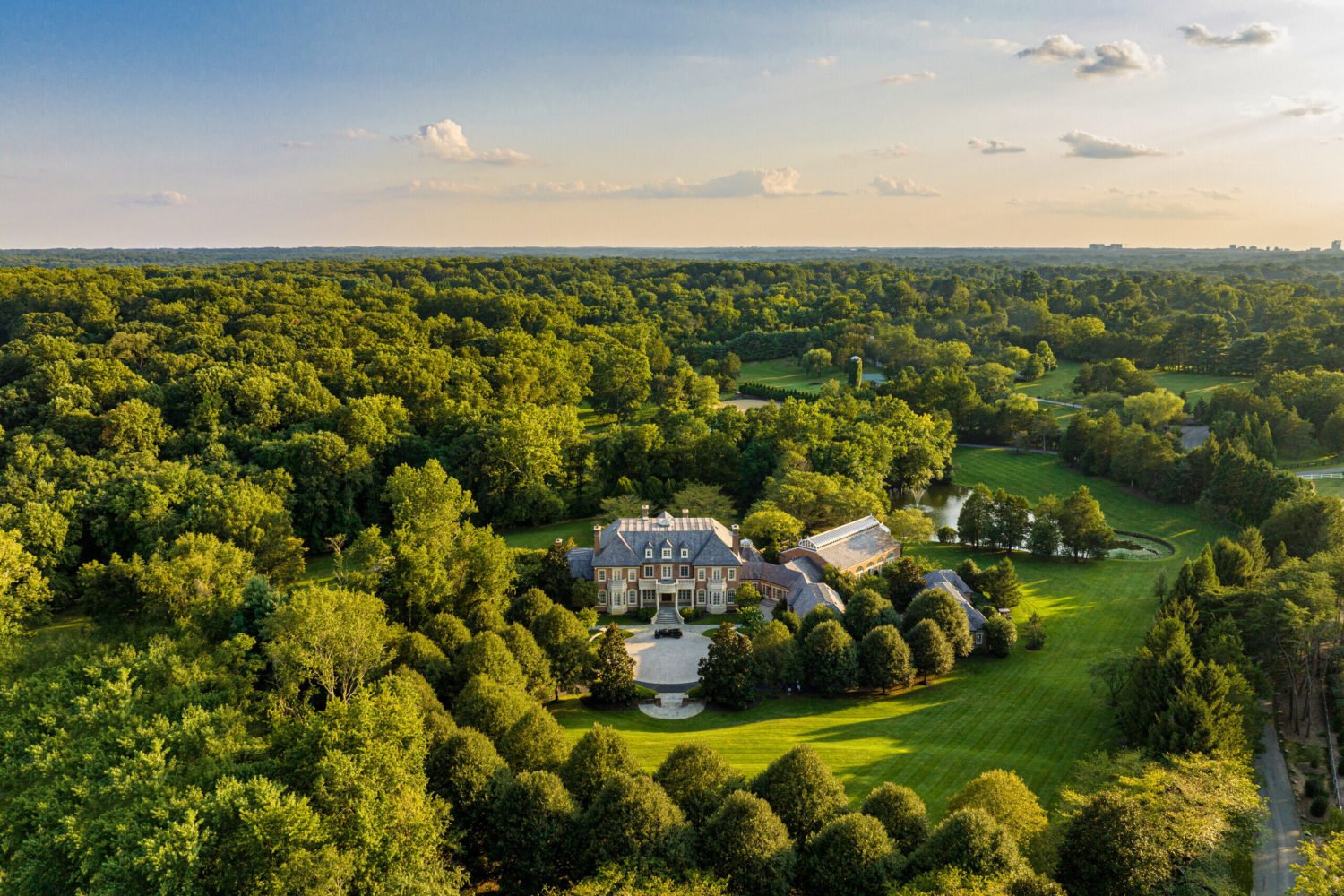Washington is a famously transient town. It attracts—and repels—a spinning number of people to its nucleus of power. Local lore inevitably spins quickly, too. Pressing stories gravitate front and center before a regularly refreshed audience, displacing yesterday’s news. So it isn’t surprising how few Washingtonians—a broad term, given how many residents, like myself, enjoy the city for some years before being called to other locales—will likely remember a dog named Ruby.
Ruby’s story is 13 years old, after all, shared in this very magazine with a poignant publishing date of September 2001. The article told the tale of how an elegant English setter was once rescued from a local animal shelter; how she was immediately hit by an SUV on R Street; how she disappeared, gravely injured, for ten agonizing days into nearby Rock Creek Park; how Georgetown residents of all political stripes joined together to search for her; how a real-life pet detective arrived on the scene with tracking dogs to canvass the woods; how former Clinton Cabinet member and current University of Miami President Donna Shalala made hushed phone calls to gain access to locked gates on historic grounds, where Ruby had been spotted; how the late Washington Post doyenne, Katherine Graham, chimed into add pressure; how an animal psychic in San Francisco “astral projected” her very soul to Washington to both locate and “talk” to Ruby, and, after doing so, how she correctly identified my dog’s hiding place, two miles north of Georgetown, near the remote horse stables and beneath the Taft Bridge; and how, remarkably, Ruby was found in that very spot, near dead but finally, blessedly saved.
But Ruby’s story remains half-told. And, now, as my family prepares to scatter her ashes beneath a newly planted butterfly bush in our backyard here in Westchester, New York—Ruby loved butterflies, and I hope it attracts them by the fluttering dozens—it’s time to tell the rest.
What I left out of my original article (because it was too fresh and because we didn’t yet know the ending or whether it would be a good or tragic one) was that my then-31-year-old husband Ben had just been diagnosed with a very rare, almost always fatal, cancer. Married for just 18 months, we hurriedly moved to Washington from Oxford, UK, where he’d been working at the university and where his adrenal carcinoma was first detected.
Only 300 people in the US each year are diagnosed with cancer of the adrenal glands; so few that no one’s bothered to research any therapies, much less a cure. Ben had won the unlucky lottery.
Johns Hopkins Hospital in Baltimore, just a 45-minute drive, then offered on staff one of the only experts in the world on the subject, and so the District suddenly became our new home. It was a rude welcome: Ben’s oncologist put my husband’s odds of living another five years at a meager ten percent—ten percent better than a death sentence. For extra emphasis he added with a cynical laugh that discussing treatment options was akin to “rearranging the deck chairs on the Titanic.”
“We need to get a dog,” I insisted to Ben, rather irrationally, desperate not to face what lay before us: the surgeries, the chemotherapy, the limbo of remission. “You’re going to need something else to focus on, something to hold.” What I didn’t say, or even consciously acknowledge at the time, was that it was I who needed these things. It was I who wanted the dog and the emotional rescue.
Ben wouldn’t deny me, of course, although privately he wondered if such a distraction would only complicate matters. And of course she did.
We met Ruby at a no-kill shelter in Northern Virginia on April 2, 2001. After screenings and paperwork, I was allowed to drive her back to our apartment on R Street on April 11. On April 19, spooked by a well-meaning neighbor at our front door, she dashed outside and into the busy road, where—thump—she was hit by a car before dashing off, ironically fueled (despite her massive injuries) by a jolt of adrenaline, the very hormone my husband now lacked and, in short order, would no longer produce for himself.
His chemotherapy had started a few days before. He’d already endured two surgeries and two recoveries and was vomiting in the wastebasket beneath his desk at work at his new job. But Ruby was lost and likely dying in the woods. We had to find her. So his cancer took a back seat.
You may (or may not) remember the so-called ending: how Ben found our dog panting in the tall grass beneath the Taft Bridge, well over a week after the accident, extremely weak and with two mangled legs, just as the animal psychic, procured by the shelter, had foretold. Yet the moment Ruby spotted my husband, she bolted. So fearful of people back then, she ran straight for Rock Creek Parkway, and like a live-action game of “Frogger,” she dashed through speeding traffic, broken bones and all, with my sickly husband giving weak chase, risking life and limb to do so.
What happened after Ben caught her? After Ruby had surgery to add a plate to her front leg, after she’d endured a long stay at the animal hospital, and after a welcome home party with a big cake?
I’m pleased to say that life happened. For both Ruby and my husband.
They each had a very tough summer. Ben’s remaining adrenal gland, gradually poisoned by the daily onslaught of chemo, suddenly burst and nearly killed him that July. Ruby, too, was a jittery mess, skittish to go into the park, afraid to let anyone close, terrified to go near other dogs. Her wrecked body took many months to heal. Ben spent two consecutive days in the Georgetown University ER while they tried and almost failed to properly diagnose him as his body crashed. Finally, as his blood pressure plummeted dangerously low—doctors frantic, nurses beyond frustrated—the medics put two and two together and pumped him full of cortisol and salt, his new elixir for life. He slowly revived and was eventually stabilized. Ruby, meanwhile, snored lightly by my side that night, after I finally returned home, utterly exhausted after almost losing another love.
It took a full year for man and dog to exit the fog of illness. Ben lost 40 pounds. Gaunt, with cheekbones and clavicles sharply honed, he would drag Ruby on her long leash out for a walk and do anything to engage her, to bring her back to life. She’d resist; he’d pull harder. They were both searching for joy, I think—the naïve, youthful joy one exudes before the rough, often random risks of the world issue dark reminders of how quickly everything can go terribly wrong.
Ben feared starting a family. Who could blame him? We faced a five-year window, after all, before we would know with certainty whether or not he was in the clear. The slowest-growing cancers usually return within this time frame, and his was said to be extremely aggressive. Talk of babies would need to wait, maybe be put off forever. I silently mourned: What if I never get the chance to become a mother? I love my husband, I’ll stand by him always, but I was distraught; first I had to face the distinct possibility of losing Ben, and now I would likely lose out on motherhood, too, something I’d always longed to experience.
Still, there was nothing to discuss. Ruby became our child.
“I’d like you to meet the mother of my dog,” is how Ben would jokingly introduce me to his friends and colleagues, and I laughed along, because she was quickly filling a maternal void. Ruby was so needy, so easily startled, so demanding of my attention. She was a tenacious toddler, always pawing at my knee, digging up the flowers or putting things in her mouth—rocks, pencils, even a stray poker chip gobbled at the park—that she shouldn’t eat. She was a full-time job.
A freelance writer, I soon found I couldn’t work without her lying at my feet. Ruby learned to sit there patiently for hours until I finished typing, so we could go outside to enjoy the sunshine together. This reverie was only interrupted when she licked my bare toes in an earnest attempt to spit-bathe them. We developed such a mutual devotion, she and I, that when I did become pregnant in 2003—Ben, beginning to believe he’d live, wanted to try—I actually wondered if it was possible to adore my new baby as much as my beloved canine companion. (I did, of course, and do.)
Two daughters arrived, the second in 2007, and we were complete. After years of highs and lows, of ebbing and waning health, Ben’s strength had miraculously rebounded; he’d beaten those terrible odds. We still don’t know how or why. And our dog found joie de vivre; she assumed the role of oldest sibling, showing our pack how things were done at the park. Our three girls ran together in the grass, Ruby sitting guard at the playground’s fence while her sisters climbed and soared on the swings. They chased the butterflies, too, Ruby’s right front leg stiffening into a sharp point before she pounced.
We were a happy party of five. Once, when I was lured to a storefront palm reader on M Street during a fun night out with a girlfriend, I smiled when the gypsy told me I had three lights encircling me, each representing a child. Yes, I agreed, that’s true.
We reluctantly left Washington in 2008 for a job in Los Angeles. The joke was that Ruby would spend her retirement years playing golf and enjoying the sunshine, and that she deserved both. The latter was indeed the case; we’d leave the French doors open to our bug-less backyard—so amazing after combatting the hordes of mosquitos in DC—and she’d sit outside on the hot stone patio for hours, panting until she couldn’t bear the dry desert heat a moment longer. Then she’d pull herself up, head for the shade indoors, slurp up a quick slosh of water from her bowl and, moments later, return to repeat the process. This was her agenda every cloudless afternoon.
We expected our life in LA to go on like this. But in 2009 Ruby grew a bulbous, bleeding tumor from her knee, seemingly overnight, which was diagnosed as a fast-moving cancer, one that would quickly spread to her lymph nodes. Ben took this news hard; he’d been spared, and he couldn’t bear the notion our dog might not be, as if we somehow owed one life for the other. We held onto her very hard as we waited for the test results; we begged her not to leave us. When she was given the all clear some days later, we considered the reprieve our family’s second miracle. And we gave thanks. We’d caught the cancer and removed it in time. Ruby would live.
And live she did. Limping from her earlier accident, stiff and in pain from encroaching arthritis, the sweet girl could no longer chase butterflies as she had in her youth. But despite the rough start, she curled into our life as we curled into her. And she was always game. Walking back from Starbucks during summer mornings, we’d play “the race.” Five houses from our front door, all three of my girls would line up and wait for me to say: Ready? Set. Go! Then they would take off galloping down the sidewalk, Ruby always lagging behind, but only until my daughters purposely slowed their gaits to allow the dog to catch up and win. She’d reach our door first, kids cheering, her tail wagging like a white flag, believing herself the victor. And it made me smile every time to see it.
We made one final move back to the East Coast last September. Ruby was now 14—at minimum—and I worried terribly about transporting her. When the animal-relocation team finally pulled up to our new house near midnight and let my dog out of her airline-approved crate, I sobbed with relief. So did my oldest daughter, who’d begged to wait up with me. Ruby, meanwhile, excitedly knocked my bathrobe-clad body over as she moved into the house to explore the stacked cardboard boxes filling the otherwise-empty rooms, sniffing out her favorite bed in the den within twenty seconds of her arrival. She was home.
It was a hard winter in New York and in DC—and in much of the country, as well. Ruby’s sharp decline coincided with the escalation of the bitter cold. She stopped eating and dropped six pounds in four months. She slept most of the day. Her eyesight had been faltering for years; her hearing was long gone. But it was the seizures—sometimes as many as six a day—that started up and brought her down. She would fall over stiff as a board onto her side, convulse violently for a minute or sometimes longer as her head strained backward at an awkward angle, her tongue lolling out of her mouth, her eyes glazed and unseeing, her heart racing unnaturally, her breath forced and labored. And each time, her bowels or bladder or both would let loose, and my regal, legendary dog would soil her gorgeous white fur. And there was nothing I could do but stroke her head, do my best to clean her up, kiss her aging snout, tell her not to worry, and encourage her to eat her anti-seizure medicine, hoping it would begin to work. I prayed it would.
But it didn’t. And on April 2, 2014, exactly thirteen years to the day from when we first locked eyes with her in Northern Virginia, Ruby drew her last breath in our home. I held her paw and wept, as guttural sounds issued somewhere from deep within me. We’d lost our first child. Our most constant friend. Our dog.
A few days later we left for Washington. The kids were on spring break, and we’d decided to stop in DC on our way to visit the grandparents down south. We also had a mission: to return a little bit of Ruby’s spirit to the neighborhood whose residents had once joined together to save her life.
And so, on an unseasonably warm April day, ignoring our own transience, or the possible transience of the townspeople strolling in Georgetown on R Street, we ventured into Montrose Park, flowering and green. It was a place Ruby had grown to love, where she’d first learned to play with other dogs and relax into the pleasures of living. And where, so long ago, she’d first vanished amid the cherry blossoms.
There, past the far-back tree line, where the manicured park merges into the wild underbrush of Rock Creek woods, beyond the steep and hilly terrain that leads to a small bridge crossing a rocky creek, where local dogs have claimed the rushing water as their own swimming hole, we took out a covert little bag filled with some of Ruby’s ashes—the bulk of which were saved to grow a butterfly bush back in New York—and scattered a few into a flowering shrub overlooking the dogs splashing below.
And here some of our beautiful dog remains. You’ll find her spirit a few feet removed from foot traffic, fortifying the clovers and crocuses that attract the Cabbage Whites, the Silver-Spotted Skippers, the many Monarchs that swarm to these climes in warmer months. A big part of Ruby’s story belongs to Washington, and while it’s no longer pressing, this final chapter makes her more than just a distant District dog tale or ancient lore once buzzed about but now forgotten. Now she’s a permanent resident, nothing transient about her. Now Ruby is forever yours, too.










